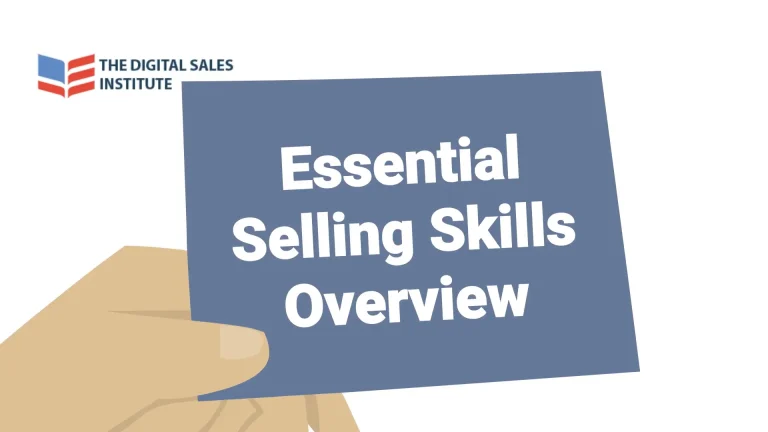How to close a sale with twelve techniques that have been tried and tested, because closing sales is about the salesperson’s attitude as much as the sales skill. There is no doubt that sales cycles have gotten longer, and closing a sale is nearly a process in itself. Close rates are falling because many salespeople are focused on selling the wrong thing. They focus on only one aspect of the sale: You pay me this for that, or you give me this for that.
A good place to start on how to close a sale is to first ask yourself: Why would anyone want to buy my product or service or have sales conversations with me? If you can’t understand the value proposition of what you are pitching or selling, how can you expect others to understand? Understanding the motivations and values of the buyer can greatly increase your opportunity for sales success and closing sales. Do your very best to get into their head before you pitch anything.
What does “close a sale” mean?
Let’s imagine that you have now reached the moment of truth in the sales cycle: will the prospect buy or not? Traditional sales language calls this stage the “close.” The truth is that closing sales is a process, not a single event. Because the reality is you’re not closing anything, but confirming a relationship with a new customer, upselling an existing customer, or gaining agreement to move forward to a next step in the process.
The wording “close a sale,” for example, means to obstruct an opening or entrance, to shut out, block, or hinder access. Also, a closed mind blocks new ideas. To “confirm” means to verify, establish the certainty of something, strengthen, or make binding by way of a formal agreement, usually signed. Which would you rather do? Strengthen the certainty of your relationship and bind together in a formal agreement, or block access, not only for your prospect but your mind as well?
So, confirming the sale means simply to ask for the business. But many salespeople, especially beginners, have difficulty asking for money. They’re great at pitching products but fail to help the prospect make a buying decision.
Confirm with positive expectancy.
Positive expectancy is a confident, optimistic attitude that you will achieve what you expect to achieve and what others expect us to achieve. We get what we expect. Thoughts become things. If we think the right thoughts, the right action follows, producing what we expect. It also produces a heightened sense of pleasurable anticipation, enabling us to enjoy the journey along the way. Positive expectations reduce doubt, fear, and worry. If you don’t accept failure as an option, you’ll continue to advance in spite of hesitations.
Some Common Sales Closing Techniques.
Trial Closes
Trial sales closes are non-threatening questions that test buyer receptivity to close a sale, looking for opinions, feedback, thoughts, or reactions. Use these throughout the sales process to verify levels of interest or learn the prospect’s opinion. If you get a favorable response, advance the sale.
What’s your opinion?
Ask for feedback on the prospect’s opinion at key stages of the sales cycle. This is the only way to judge when the final confirming question should be asked. You might ask,
- How does this solution sound?
- Which of these two options do you like best?
- What’s your impression so far?
- How do you feel about the payment option program?
- What additional information do you need in order to make a decision?
If/Then
How to close sales by asking an if/then question. If we include the training, then would you be interested in moving forward? Or something specific that addresses a need, such as, If we can get it customized to your specifications, are you ready to move forward?
Assumptive Confirmations
The assumptive approach assumes that the prospect is moving forward and bypasses a direct statement such as, “Let’s write it up today.” Assuming that the sale is moving forward helps prospects subtly move past indecision to final acceptance.
When’s a good time to get started?
After a prospect shows interest, you might ask,
When’s a good time to get started?
Wait for a positive answer, then move into a Direct Confirmation such as,
Great. All we need is your agreement on the proposal. Or I’ll send the agreement, and we’ll get started by X…
In order to move forward
When a prospect shows buying signals, such as asking questions, head nods, or even a forward lean, assume interest exists. You might ask,
In what ways will this resolve your issue?
Wait for a positive response, then assume the sale.
In order to move forward, we need to…
Then present next steps. You might also add a direct statement such as,
I’m looking forward to working with you.
Plus, when confirming larger sales, it’s important to work with the prospect’s buying parameters. You might ask, How would you recommend that we move forward? Or what are our next steps for moving forward? This is also a trial close question, testing buyer receptivity.
The Puppy Dog Close
This sales close technique comes from the idea that if a pet store offered to let you “test a puppy out” and take it home for a few days, you would fall in love with it and never return it. In a puppy dog close, offer a money-back guarantee or a 60-day cancellation (not a free trial) of your product with no strings attached. The hope is that the prospect finds your product so indispensable that after their little test drive, they can’t bear to part with it.
The Alternative Choice
The Alternative Choice doesn’t ask for agreement on the BIG decision but gives buyers an opportunity to make a choice between two smaller alternatives leading to the final decision. It also implies that the sale is assumed. Go through the steps you would take if someone had already said, “Yes.”
Here or there?
If we were to progress, would you start the implementation with office A or office B?
Wait for an answer. If the prospect makes a choice between the two alternatives, assume the sale and move the sale forward below.
Would you prefer X or Y?
Fill in with choices such as color, size, manual or automatic, check or credit card, extended warranty or short-term coverage, etc. Simply give two choices, one thing or another.
The Gauge Close
You gauge the customer’s position by asking them how interested they are in your product. (Example: “On a scale of one to 10, with 10 being my solution is in pole position, how likely are you to move forward with purchasing?”). The gauge close does two things: It lets you know if you’ve been effectively communicating the value of your product and also gives you an opportunity to address any objections they might not have shared with you.
Conditional Confirmations
Conditional confirmations in how to close sales are those that reach agreement based on certain conditions being met. Many of these are expressed as “If/then” conditions.
If we can meet your need for X…
If we can meet your need for X, then are you ready to approve the order?
Or, if we can get it for 10% less, then are you ready to move forward?
If I can get it to you by Wednesday, do we have an agreement?
This combines the conditional confirmation and the “If/Then” methods together.
The Scarcity Close
The scarcity or incentive close must be genuine and real, plus the customer has acknowledged an intent to buy (from a competitor or you). The scarcity sales close is based on FOMO (fear of missing out) to get a prospect to make a decision. Example: We’re running a special on that item today. We’re offering it at 15% off list price until 5:00. Let’s get you that cost savings. Since we agree that urgency is an issue and I’m able to get it shipped tomorrow, let’s get the order booked. We only have five left in stock, or this offer must end Friday, and my boss will not extend it. This only works when the prospect is sincerely interested in buying but needs a nudge to make a decision.
The Ascending Close
The ascending “Yes” or staircase method builds a series of questions designed to elicit a series of “Yes commitments” from your prospect. Effective selling gathers smaller commitments along the sales cycle so that the final “Yes” is less threatening. Before using this method, be confident that you’ll get a “Yes” to each question because the prospect has already indicated positive interest in each of the points. This is a way to summarize the smaller commitments already given so you can confirm the sale.
You might ask,
Seller: The payment terms are acceptable to you.
Buyer: Sounds good.
Seller: You mentioned you like our quality?
Buyer: I was very impressed!
Seller: So, we can get an approval?
Buyer: Yes, Frank and I discussed this last week.
Seller: Then let’s move forward with the agreement. Here’s how we can get started…

The Demo Yeses
This confirming technique works well after a demonstration. You might ask:
Seller: Did the demo clarify how we resolve performance issues?
Buyer: Yes, thanks.
Seller: Have we met or exceeded your expectations?
Buyer: Definitely! It has what we’ve been looking for.
Seller: Are you in agreement with the roll-out recommendations?
Buyer: It sounds like a good plan.
Seller: Would you like us to get started next week?
Buyer: Sure, that would work.
This combines Ascending Yes with the Direct Confirmation.
Multiple Choice Close
The multiple choice gives prospects three choices from which to select so you can close a sale. Offering more than three confuses buyers and forces a “think it over.” This is very effective when you offer many product or service options, and buyers really need someone to narrow the field to the best three recommendations. High, Low, Mid-Range
Provide a high, low, and mid-range. This could be price options, delivery schedules, bundled packages, etc. Put the option you feel is most appropriate in the middle of your three choices.
You might say, We offer the starter set at $X. We also have the high-end gold model at $Y for high-usage needs. Many choose the platinum option as it’s the highest performer at a more affordable price point. Which would best fit your needs?
You never know when someone’s going to go for the most expensive choice, just because they can! Don’t assume they will go for the low or mid-price range. Instead of asking for one’s opinion at the end, you might say, Based on our conversation, I’d recommend… and then offer your expert input.
Final words on how to close a sale.
At times, we have to turn our sales closing inside out so that we can look at it in a totally different way. When people reject our proposal or offer, it’s often because we didn’t make our offer sufficiently compelling (what’s in it for me?), we ignored their needs, or we simply failed to clearly define the value or long- and short-term benefits of what we are selling. In today’s competitive business world, within every industry, each sales opportunity is pursued by a host of competitors who think they can deliver the best product, service, or message.
Today, the challenge for all salespeople sales training is creating a uniqueness to their value proposition and providing unique insights that give our business a competitive edge in the eyes of the buyer.



